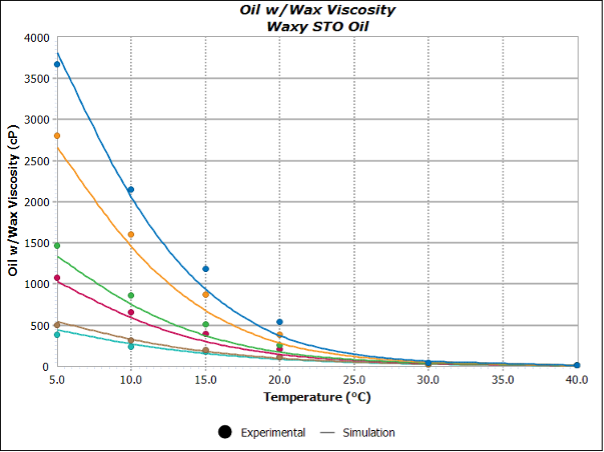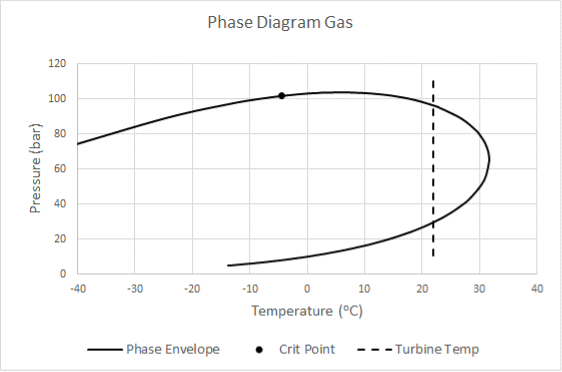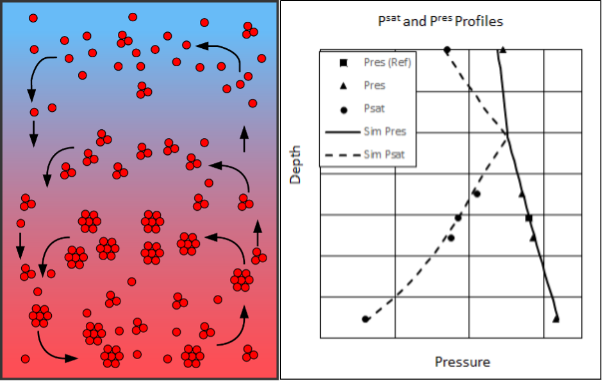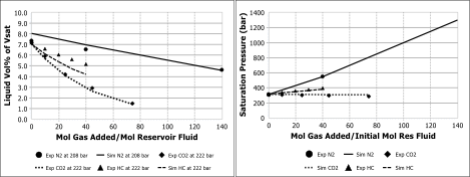Projects
Listed below are examples of projects Karen Schou Pedersen has conducted or been heavily involved in.
RESERVOIR
Compositional Grading
Modeling of the compositional grading in five fields in the North Sea showing significant differences in the compositional variation with depth. These differences were found to be caused by different asphaltene contents and large viscosity differences. With these differences considered, the compositional gradient could be accurately simulated (SPE 175085-MS and SPE 205887-MS).
The fluid composition in a reservoir varies with depth. The compositional gradient is affected by the gravity, the thermal gradient and the viscosity. These effects cause the total concentration of heavy components to increase with depth. The highest compositional gradient is seen in highly viscous reservoirs where the diffusion rate of the heavier molecules is low.
Gas Injection as an Enhanced Recovery Technique for Gas Condensates
Evaluation of the potential for enhancing the recovery from a depleted gas condensate field in the Middle East by use of gas injection. Three injection gases were compared, N2, CO2 and a HC gas (SPE 177778-MS).
Experimental and simulated gas revaporization results. The left-hand plots show the liquid volume percent of the dew point volume as a function of moles gas added. The right-hand plots show the development in saturation pressure with moles gas added.
Characterization study for North Sea reservoir
Twelve different well streams from a North Sea reservoir were characterized to a unique set of 8 pseudo-components. The compositions covered gas condensates, near critical fluids and oil compositions. The reservoir pressures were of the order 900 bar. PVT data for each of the 12 fluids was matched and Eclipse Comp files generated for each stream.
Principle of common EoS modeling exemplified through the C11-C14 components

EOR EoS model for Middle East Reservoir fluid
Developed 9-component EOR EOS model for Middle East reservoir fluid with extensive PVT data including swelling, multi contact, equilibrium contact and slim tube data with two different injection gases (CO2 and hydrocarbon).
Solubility swelling curve with shift from bubble to dew point (left-hand) and slimtube recovery curve (right-hand).
Asphaltene Precipitation Study
The potential for asphaltene precipitation in a Venezuelan field was evaluated. Various production strategies were considered including natural depletion, natural gas injection and CO2 injection. It was found that all these production strategies might lead to severe asphaltene deposition problems.
Schemantic representation of Asphaltene 1D simuation results.
QC of PVT reports
PVT reports for a field in Africa covering a period of around 25 years were evaluated and compared. In this evaluation the production from the field during the 25 years of production was to be taken into consideration. The purpose of the project was to provide a best estimate of the composition of the currently produced reservoir fluid and to generate corresponding Eclipse Black Oil input PVT tables.
Saturated and undersaturated Bo’s and oil viscosities.
Evaluation of EoS model
An EoS model had been developed some years in advance for a field in the Middle East. The field was reach in H2S with large horizontal variations in H2S concentration. CO2 injection was planned to take place. The task was to evaluate the quality of the EOS model and to find out how well the EoS description matched more recent PVT data including CO2 swelling data.
EoS model creating unphysical 3-phase area (red area in figure).
FLOW ASSURANCE
Wax Deposition Study
Conducted wax deposition study for African oil pipeline. Work included wax build-up at inner side of pipeline and start up analyses.
To get a correct picture of the flow conditions in a pipeline carrying oil with suspended wax particles, the non-Newtonian viscosity behavior must be accounted for (viscosity depends on the shear rate).

Hydrate Study
Analysis for North Sea oil company of how the hydrate risk would evolve over time as the gas/oil ratio and water cut increased.
Phase diagram for a gas condensate with a 10% water cut. A free water phase is present between the water dew line and the hydrate curve. At lower temperatures gas hydrates may form.

TECHNICAL EXPERT
Technical Expert in Arbitration
An arbitration held in London UK concerned a natural gas delivered from a field offshore China to a power plant in China. The dewpoint of the gas was claimed not to meet the agreed specification. Too high dew points can cause serious damage to the gas turbines. Composition data for the gas supplied over a period of 7 months was evaluated and dew point simulations carried out to check if the specification was met.
Phase envelope for a sales gas. Liquid condensation will occur in a turbine operating at 22 oC, which is likely to damage the turbine blades








